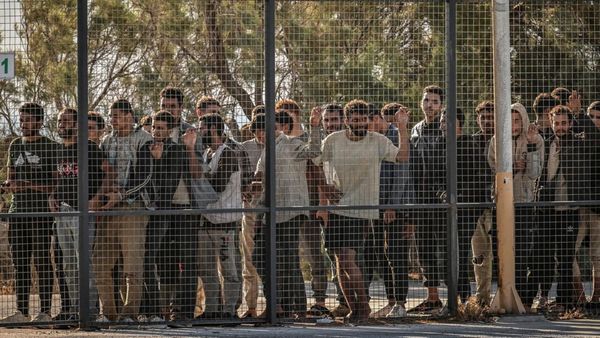
Colombo, Sri Lanka – The mainly youth-led protest movement in crisis-hit Sri Lanka is divided on whether to withdraw from a sea-facing camp they set up months ago near the presidential secretariat in capital Colombo.
The GotaGoGama camp, also called Galle Face Green, is the epicentre of the protests in Sri Lanka that started more than 100 days ago to demand the removal of the then-government over the country’s worst economic crisis in seven decades.
At their peak, the protests saw tens of thousands of people occupying important government buildings for days, forcing President Gotabaya Rajapaksa to flee the country and resign.
Six-time Prime Minister Ranil Wickremesinghe was elected the new president, despite the protesters demanding the entire ruling elite quit.
The debate within the protest movement on wrapping up the camp was triggered by a violent crackdown by the Sri Lankan security forces 10 days ago. Many protest leaders were arrested, their tents destroyed and the area cordoned off.

Several ministers in the government have also called for the removal of protesters from the camp.
Speaking in Parliament last week, Urban Development Minister Prasanna Ranatunga said the allocated protest site should be moved to another location as Galle Face is an economic hub.
Following his remarks and due to continuous arrest and intimidation of protest leaders, some protesters have already moved out, Shabeer Mohamed, one of the leaders of the protest movement, told Al Jazeera.
“Some others who love GotaGoGama and the groups backed by certain political parties are still there,” he added.
A popular library at the camp is among some of the tents that was removed by the protesters.
Melani Gunathilake, another protest leader, told Al Jazeera that only the regular visitors to the camp are leaving and not the “residents of GotaGoGama”.
“Some people are also scared due to various threats but the permanent residents of GotaGoGama have decided to stay,” she said.
Vimukthi Dushantha, a convener of the Black Cap movement, says his group decided to leave the village to launch their next phase of the struggle, which he said was titled “Aragalaya 4.0” after the Sinhala word for “struggle”.
“Our main slogan at GotaGoGama was for Gotabya to leave. Now he is gone,” he told Al Jazeera.
“We believe the role of GotaGoGama as the centre of the protest is now over. The next phase of the protest should focus on introducing political, social and economic reforms.”
Ironically, Galle Face Green was earmarked for mass protests by Gotabaya himself. But days after assuming the presidency, Wickremesinghe announced that several other places in Colombo had been identified as suitable places to hold future protests.
Public Security Minister Tiran Alles also stressed the need for the protesters to vacate Galle Face Green.
“Recently some Russian tourists travelling around GotaGoGama said no tourists would come if these ugly tents continue to be there. This is the heart of the capital and this is where all the top tourist hotels are,” he told Al Jazeera.
The debate over vacating the main protest site in Colombo came days after many people sustained injuries in a military assault on the protesters. Many protest leaders have gone into hiding due to threats to their lives or of arrest.
They say the police officials have been visiting their families and relatives, asking for their whereabouts.

There are also allegations that the July 21 attack on the protest camp was carried out by a paramilitary group and not by the military, though army soldiers were also present there.
“Some in the military told us a group in civilian clothes arrived in a bus and put military uniforms on inside the bus before launching the attack,” Pubudu Jagoda, a leader of the Frontline Socialist Party, told reporters. He claimed some uniformed attackers were drunk.
But Alles, the minister, rejected the allegation. “Only the police and the military were used for the operation to get the protesters out,” he told Al Jazeera.
Meanwhile, the protesters are faced with a curious situation.
On May 9, exactly a month after the GotaGoGama camp was set up, former Prime Minister Mahinda Rajapaksa, the strongman patriarch of the country’s most powerful clan, resigned.
His younger brother Basil Rajapaksa left his parliamentary seat a month later, on June 9. The third brother, Gotabaya Rajapaksa, announced his resignation as president on July 9.
To maintain that trend, there are appeals now by people and some opposition politicians to call a mass protest on August 9. But protest leaders deny they have such plans.







